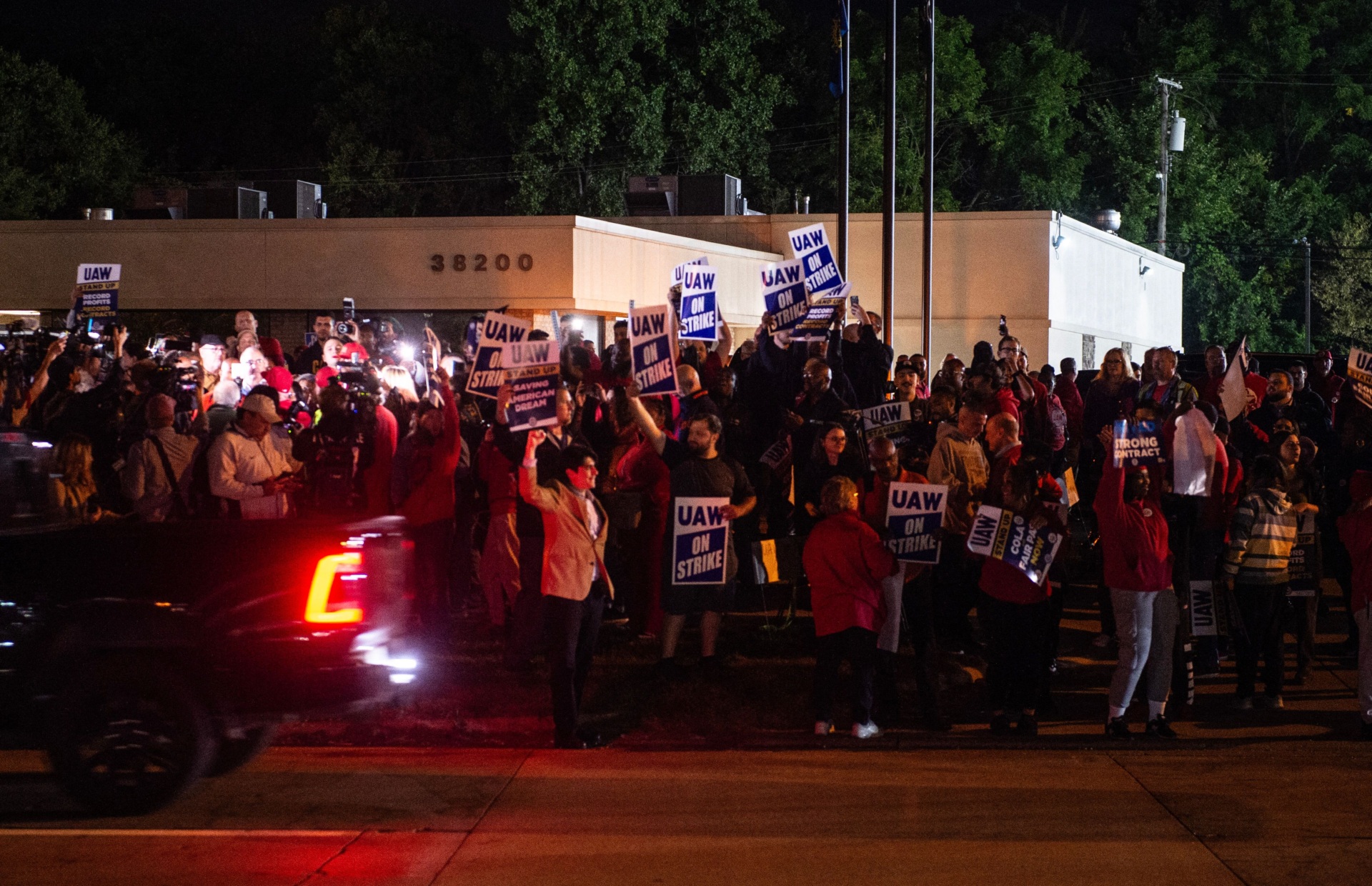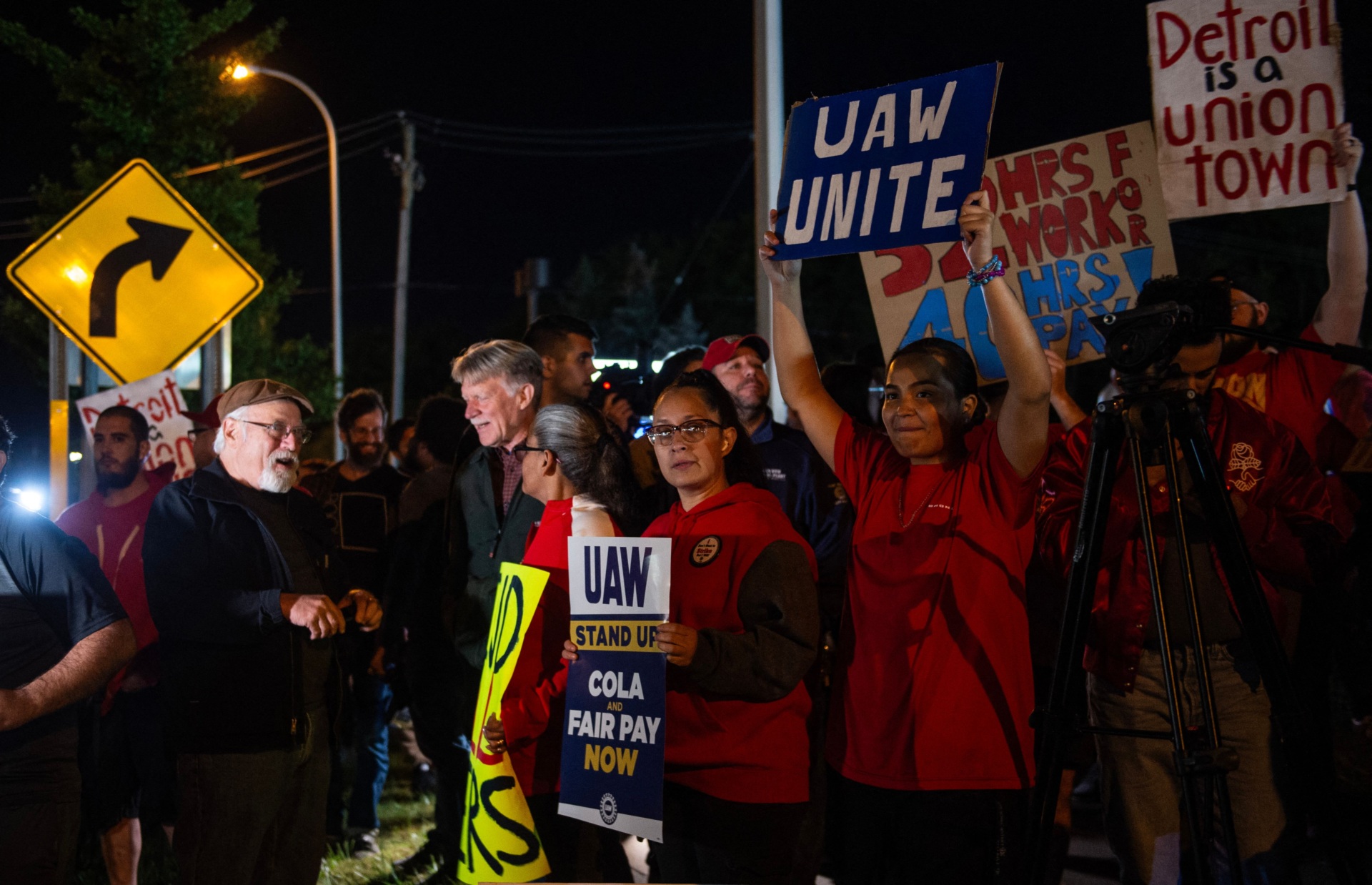
The Ghost of Wage Negotiations Past
The negotiations between the United Auto Workers (UAW) and the Big Three are haunted by the specter of Bidenflation.
The UAW’s initial ask was for a 40 percent wage hike over four years. This was a big ask, but it was an opening bid, a term that the union expected to be negotiated down by the time a final agreement is reached.
Earlier this week, the UAW brought down the wage target to around 36 percent over four years. Even that far lower amount left a big gap between the union’s ask and the offers from General Motors, Ford Motor Co., and Stellantis, who were offering pay increases in the range of nine to 14.5 percent over the course of the four-year contract.
Shawn Fain, the new UAW leader, said the union sought a 40 percent wage increase because that’s what the average salary hike was for Detroit automotive executives over the past four years.
A better way of analyzing the raises, however, is to compare them to increases in the cost of living for UAW members. When the last contracts were negotiated in 2019, inflation was running below two percent. In the 12 months through August 2019, the consumer price index nationwide had increased 1.7 percent. In the Detroit-Flint area, it was up by even less: just 1.3 percent. Over the previous four years, the consumer price index for the Detroit region was up a total of 4.5 percent.
The agreement struck after what was then the longest strike in half a century included a hybrid system of lump sum payments and annual wage increases. Every other year, workers would receive a lump sum payment equal to four percent of their wages. In alternate years, they would receive a three percent pay increase. This can be thought of as working out to around a 15 percent pay increase over the course of the contract.
This was not bad—but it wasn’t great. The union had won a very similar pay increase in the prior negotiation. It appeared to lock in an improving quality of life for UAW members because their wages were set to increase above the two percent rate of inflation being targeted by the Federal Reserve and far above the recently experienced rate of inflation.
Bidenflation: The Jump Scare
Then along came Bidneflation to upend the benefits of the deal. Detroit area inflation over the four years ending this August has totaled 21.6 percent. As a result, the UAW members have seen all of their anticipated wage gains erased and more. They’ve lost ground against the cost of living. And not just a little. This was a major setback for our autoworkers.
As we pointed out in yesterday’s Breitbart Business Digest, inflation has been much worse in the heartland of U.S. automaking than the national average, reversing the prepandemic period in which it was better. Year-over-year inflation peaked at nearly 10 percent last summer, nearly a full point above the nine percent for the national average.
In that context, the UAW ask on wages seems a lot more reasonable. If inflation were to continue at 10 percent a year, a 10 percent per year raise would just keep UAW members even with the cost-of-living.

Members of the UAW hold signs outside of the UAW Local 900 headquarters across the street from the Ford Assembly Plant in Wayne, Michigan on September 15, 2023, after the union called a strike on the Detroit’s Big Three automakers. (MATTHEW HATCHER/AFP via Getty Images)

Members of the UAW hold signs outside of the UAW Local 900 headquarters across the street from the Ford Assembly Plant in Wayne, Michigan on September 15, 2023, after a strike was called. (MATTHEW HATCHER/AFP via Getty Images)
Of course, no one expects inflation to persist at anywhere near that level. We’re already down to 3.7 percent nationwide, although in Detroit it’s still much hotter. In the 12 months through August, the regional CPI is up 5.9 percent.
There’s good reason to think that inflation is unlikely to come all the way down to two percent on average over the next four years. Many economists think that a three percent target is more reasonable for the Fed, although the Fed has signaled it is unlikely to change the target any time soon. That doesn’t mean that the Fed can hit its target. Just as the Fed undershot the target in the decade or so following the financial crisis, it looks like inflation will overshoot the target in the coming decade.
There are plenty of reasons for this. The U.S. and the rest of the developed world are no longer moving production to China—and doing so is no longer as deflationary as it was in the first two decades of the twenty-first century. Friendshoring and bringing supply chains back home are likely to increase inflationary pressures. Increased risk of war is inflationary. Diverting capital from efficient uses to Green New Deal schemes will increase inflation. Supporting an aging population and high budget deficits are also inflationary and will put pressure on the Fed to remain more accommodative than it otherwise might prefer.
Nationally, it seems reasonable to assume inflation will run around three percent on average over the next four years. In Detroit, we may be looking at four or five percent inflation. Compounded, a four percent per year rate of inflation would result in a 17.3 percent increase in prices. A five percent annual rate of inflation compounds to 22.1 percent over four years.
Justifying a 30 Percent Pay Hike for UAW Members
Once that’s added to a true-up for the excess cost-of-living increase over the past four years and the loss of the expected real wage increases, you can easily get to a reasonable economic justification for something in the neighborhood of a 30 percent wage increase.
There’s not likely to be much of an inflationary effect from even a 25 to 30 percent wage increase, either directly or indirectly. Directly, the increase will affect only around 150,000 workers, which amounts to one-tenth of one percent of private payrolls. That’s not even a rounding error for average hourly earnings. Indirectly, there may be upward pressure on wages as other employers step up pay to compete for workers; but absent accommodation by the Fed in the form of rate cuts, the higher labor costs are likely to be absorbed by manufacturers’ margins rather than get passed on to consumers.
If inflation runs cooler than the calculations above assume, workers will see something of a windfall. But just as the UAW members took the risk of an inflation overshoot in the last contract, it seems reasonable that the companies take it in the next contract. Four years from now, whoever got the worst of the bargain can be expected to seek an offset over the following four years.
If the ghost of Bidenflation is exorcised from our economy, the next round of negotiations between car manufacturers and their workers will likely be much easier.






